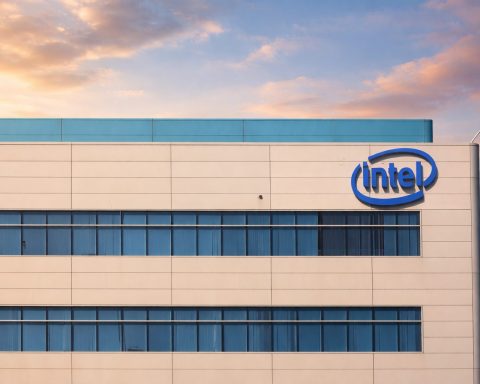Key Facts
- Record-breaking launch cadence: SpaceX notched its 125th Falcon 9 mission of 2025 on Oct. 3, lofting 28 Starlink satellites from California and pushing Vandenberg Space Force Base past its annual launch record (beating 51 launches set in 2024) [1] [2]. More than 8,500 Starlinks now orbit Earth – roughly two-thirds of all active satellites [3].
- Big money for military launches: The U.S. Space Force awarded over $1 billion in contracts to SpaceX and ULA on Oct. 3 for seven upcoming national security launches [4]. “Space is the ultimate high ground, critical for our national security… We rely on strong government-industry partnerships to deliver assets to the warfighter,” said Col. Eric Zarybnisky of Space Systems Command [5]. Meanwhile Blue Origin’s new New Glenn rocket, which debuted in January, is gearing up for its second flight – a NASA mission later this month [6].
- NASA shutdown spares critical ops: A U.S. government funding lapse on Oct. 1 forced NASA to halt most activities, leaving social media and outreach channels silent [7] [8]. Only “essential” staff remain on duty to protect life and property – meaning astronauts on the ISS and mission control stay at work. The seven-member Expedition 73 crew continued research unaffected by the shutdown [9], conducting science experiments and maintenance as usual.
- Interstellar comet buzzes Mars: A comet from another star system, designated 3I/ATLAS, made its closest approach to Mars on Oct. 3 at about 18 million miles away [10]. It’s only the third interstellar object ever detected in our solar system. NASA and ESA coordinated observations via spacecraft orbiting Mars to gather data on this rare visitor [11] [12], as scientists eagerly study its composition before it swings around the Sun later this month.
- Satellite boom and debris concerns: The satellite economy is surging, with analysts projecting the global space sector could hit $1.8 trillion by 2035 (up from ~$630 billion in 2023) [13]. But rapid growth brings risks: 1–2 SpaceX Starlink satellites now fall out of orbit and burn up each day, according to astrophysicist Jonathan McDowell [14]. With tens of thousands of new LEO satellites coming (Starlink, Amazon’s Kuiper, China’s constellations), that rate may rise to around 5 reentries per day, raising alarms about orbital debris and Kessler Syndrome (a cascade of collisions) [15].
- Global cooperation intensifies: World Space Week 2025 kicked off on Oct. 4 under the theme “Living in Space,” spotlighting sustainable technologies for future habitats [16]. Lockheed Martin Space president Robert Lightfoot, this year’s World Space Week Chair, urged developing “technologies which are sustainable for both space and Earth,” citing work on inflatable space habitats [17]. In Sydney, NASA’s acting administrator signed a new U.S.–Australia space cooperation agreement strengthening joint efforts from aeronautics to lunar exploration [18] [19]. And in a sign of shifting space dynamics, Europe’s ESA is in talks with India to potentially send European astronauts to India’s planned Bharatiya Antariksh space station in the 2030s [20] [21].
Record Launches Fuel a Satellite Frenzy
The first days of October saw rocket launch activity reach new heights. In California, SpaceX continued its torrid pace – a Falcon 9 blasted off from Vandenberg SFB on October 3 carrying 28 Starlink internet satellites to orbit [22]. This mission marked SpaceX’s 125th Falcon 9 launch of the year, an unprecedented cadence that underscores the company’s dominance in orbital access. In fact, over 70% of SpaceX’s 2025 launches have been for Starlink deployment, rapidly building the largest satellite constellation in history [23]. The latest batch brings Starlink’s active fleet to roughly 8,500 spacecraft, which now account for about two out of every three operational satellites in orbit [24].
This single launch also propelled Vandenberg Space Force Base into the record books. With numerous Falcon 9 flights from its pads, Vandenberg has now broken its all-time annual launch record, surpassing the 51 launches it hosted in 2024 [25]. The October 3 mission was the base’s 52nd of the year, illustrating the breakneck growth in launch rates. Globally, 2025 is on track to set a new record for orbital missions, reflecting surging demand for launch services to deploy communications satellites, Earth observation fleets, and more.
Looking ahead, the packed launch schedule continues. SpaceX planned another Starlink launch from Florida by Oct. 6, and even Starship – SpaceX’s giant next-gen rocket – is prepping for a test flight this month. According to reports, SpaceX aims to conduct a Starship flight test around Oct. 13, reusing a Super Heavy booster for the first time and stress-testing upgrades on the vehicle [26]. If all goes well, it would be Starship’s second flight of the year, helping advance NASA’s Artemis program goals of a lunar lander.
Other players are stepping up as well. Amazon’s Project Kuiper – a rival megaconstellation to Starlink – is set to launch its next batch of 24 internet satellites on a SpaceX Falcon 9 on Oct. 9 [27]. Notably, Amazon contracted SpaceX for multiple Kuiper launches even as it develops its own rockets, illustrating the frenetic push to orbit. This upcoming mission will be SpaceX’s third launch carrying Kuiper satellites, and Amazon eventually plans a 3,236-satellite network. (In a sign of things to come, airline JetBlue just announced it will be the first to use Kuiper satellites for in-flight Wi-Fi on its fleet [28].)
Japan is gearing up for a major debut later in October: the first flight of its new H3 rocket with an HTV-X cargo craft bound for the ISS [29]. Slated for October 20, this mission will deliver supplies via JAXA’s upgraded HTV-X freighter – the successor to Japan’s earlier HTV vessels – and represents the inaugural operational launch of the H3 launch vehicle. The H3’s success is crucial for Japan’s space ambitions after a previous test launch failure; if successful, it adds another reliable launch option for satellites and station logistics.
Even China has big human spaceflight plans this month. On October 24, China will launch the Shenzhou-21 mission, sending three taikonauts to the Tiangong space station for a six-month stay [30]. This will be China’s fourth crew rotation on its independent space station since it was completed in 2022. The Shenzhou-21 crew (yet to be publicly named as of early October) will replace the current Shenzhou-20 astronauts in orbit. China’s steady cadence – two crewed missions per year – underlines an increasingly competitive space race, as multiple nations maintain continuous human presence in orbit.
Human Spaceflight: ISS Crew Perseveres Through Shutdown
Here on Earth, space agencies grappled with political turbulence even as work in orbit carried on. In the United States, a congressional budget impasse triggered a partial government shutdown on Oct. 1, forcing NASA to effectively “close” for routine operations [31]. Public outreach, research grant support, and development work largely paused as thousands of NASA employees were furloughed. NASA’s website even posted a notice that the agency is “closed until further notice” due to the funding lapse [32]. Day-to-day communications went silent – social media feeds dormant, press releases on hold [33].
Crucially, however, mission-critical space operations have immunity from the shutdown. Per longstanding contingency plans, all personnel needed to protect human life and critical hardware remain on the job [34]. That includes the flight controllers and support teams for the International Space Station, as well as crews operating spacecraft across the solar system and those monitoring planetary defense. Astronauts aboard the ISS are exempt from the U.S. shutdown and kept right on working throughout the week [35]. “Whether they’re NASA employees or international astronauts, the [ISS] crew members are exempt,” noted space analyst Robert Pearlman, given that the Expedition 73 astronauts are part of a continuous 24/7 mission [36].
On orbit, the Expedition 73 crew – seven astronauts and cosmonauts from the U.S., Russia, Japan and Europe – remained busy with a full slate of science and maintenance. Despite the uncertainty on the ground, they conducted experiments ranging from testing a new humidity-recycling device (the SHRIMP payload that pulls water from air) to installing a Heat Transfer experiment studying condensation in microgravity, which will inform thermal systems on future deep-space missions [37]. NASA’s Jonny Kim and Mike Fincke worked on European and commercial tech demos (like a fluid physics lab and an orbital debris “Capture Bag” test for cleaning up space junk) [38]. Fellow crew members Zena Cardman (NASA) tended to a biomedical experiment on drug manufacturing in microgravity [39], while Japan’s Kimiya Yui serviced a high-temperature furnace for materials science [40]. In short, research on the ISS continued unabated, insulated from political disruptions on Earth.
As of October 3, there were 7 people living aboard the ISS, and the orbital outpost has been continuously crewed for just shy of 25 years straight (24 years and 11 months) [41]. That longevity is a testament to international cooperation – even during a U.S. shutdown, Russian mission control and other partners keep the station running smoothly. NASA did, however, temporarily pause tourism visits and public tours at facilities like Johnson Space Center, and some training activities for future missions may face minor delays [42] [43]. But critical missions like SpaceX’s next crewed flight or preparations for Artemis continue on track, drawing on previously appropriated funds and excepted personnel (though a prolonged shutdown could have broader impacts on launch schedules and contract work down the line) [44].
Meanwhile, China’s Tiangong station is entering a busy period as well. After Shenzhou-21 launches later in October [45], China will have a fresh trio of astronauts in orbit while the departing crew returns home. Notably, Chinese mission operations have proceeded unaffected by foreign events, underscoring the parallel nature of the two space station programs. International Space Station astronauts even exchanged informal greetings with their Chinese counterparts via ham radio earlier this year, a reminder that human spaceflight transcends Earthly politics.
Commercial & Military Space: Contracts, Capsules and Constellations
Beyond the civil space realm, commercial and military space developments made headlines during the period. On the defense side, the U.S. Space Force announced a major procurement on Oct. 3: SpaceX and United Launch Alliance (ULA) won contracts worth $1.14 billion combined to carry out seven national security space missions in the late 2020s [46]. SpaceX’s share is $714 million for five launches, while ULA received $428 million for two launches [47] – reflecting SpaceX’s cost competitiveness and heavy lift capacity with its Falcon Heavy (and possibly Starship) for military payloads. These awards fall under Phase 3 of the National Security Space Launch program, which from 2027 onward also aims to bring Blue Origin into the fold as a launch provider [48]. (Blue Origin was pre-selected for some future missions once its New Glenn rocket is fully certified, though it wasn’t eligible for this batch as New Glenn has only flown once so far [49].)
This contracting wave highlights the Pentagon’s commitment to assured access to orbit. “Delivering assets to the warfighter is our ultimate mission, and we rely on our strong partnerships … to achieve that goal,” emphasized Col. Eric Zarybnisky of Space Force’s launch program [50]. The newly funded missions include two classified NRO (spy satellite) launches and five Space Force payloads – among them a GPS navigation satellite and a Wideband Global Satcom communications craft [51]. They’ll launch from 2027 onward, mainly from Florida’s Cape Canaveral.
In the commercial sector, Blue Origin is ramping up for some high-profile missions that could happen as soon as this month. Jeff Bezos’s space firm conducted the maiden flight of New Glenn – its heavy-lift orbital rocket – in January 2025, and is now readying New Glenn’s second launch. Tentatively expected in late October, that mission is slated to carry Blue Origin’s own “Blue Moon” lunar lander (Mark 1) on its first test flight to the Moon’s surface [52]. The Blue Moon Mark 1 lander can deliver up to 3 tons to the lunar surface, and in this demo it will be carrying a small NASA rover to the Moon’s south polar region [53]. (The south pole is of keen scientific interest for its water ice deposits in permanently shadowed craters.) If successful, this mission will not only mark New Glenn’s second flight but also demonstrate Blue Origin’s lunar landing capabilities well ahead of its scheduled Artemis V human lunar lander in the late 2020s.
Blue Origin also has Mars in its sights. Later in October – schedule to-be-determined – New Glenn is expected to launch twin orbital probes to Mars nicknamed “Blue” and “Gold.” These are small scientific satellites (developed with NASA support) that will spend about a year cruising to the Red Planet [54]. Once in Mars orbit, they will study the planet’s magnetosphere and plasma environment, helping to understand how solar wind interacts with Mars’ atmosphere. This mission, part of NASA’s ESCAPADE program, has seen multiple delays (originally planned for late 2024, then pushed from August to October 2025) [55]. Launching two planetary probes on a commercial rocket will be a milestone for Blue Origin and a novel demonstration of private-sector deep space capability. New Glenn’s success with these back-to-back Moon and Mars endeavors could vault Blue Origin into the top tier of launch providers alongside SpaceX and ULA.
Another commercial story developing: private space stations and capsules. Axiom Space’s Ax-3 mission (with a crew of private astronauts visiting the ISS) recently returned, and an Ax-4 mission is in training for next year. Companies are also vying to build the first commercial free-flying outpost in orbit before the ISS retires in 2030. During the shutdown, NASA kept working with industry on Commercial LEO Destinations proposals, albeit via exempt personnel. And in an interesting crossover of commercial and international efforts, India’s space agency (ISRO) announced plans to launch AST SpaceMobile’s next-generation BlueBird satellite on its rockets [56] – signifying the global nature of the satellite telecom boom.
On the market front, recent analyses paint a bullish picture for the space sector. Investment is pouring in, with global space venture funding hitting record levels over the past two years [57]. The Space Foundation’s latest report projected the space economy grew to $613 billion in 2024, continuing 15+ years of expansion [58]. Looking ahead, a new World Economic Forum/McKinsey study forecasts the space economy will triple in size to about $1.8 trillion by 2035 [59], averaging ~9% annual growth – far outpacing global GDP growth. Key drivers include the proliferation of satellites for communications, Earth observation and navigation, as well as downstream services enabled by space data [60]. In other words, space tech like GPS, satellite broadband and imaging are becoming ever more integral to industries from agriculture to finance.
However, with this boom comes the growing challenge of space traffic management. Launch costs have fallen and satellite manufacturing has scaled up, resulting in an unprecedented number of objects in orbit. Many of these new satellites operate in low-Earth orbit (LEO) – and they won’t last forever. In fact, satellites in a few-hundred-kilometer LEO tend to reenter and burn up in the atmosphere after 5 to 7 years on average [61]. According to tracking by Jonathan McDowell (astrophysicist and author of Jonathan’s Space Report), there are currently about 1–2 Starlink satellites deorbiting per day as SpaceX’s older units decay and fall back to Earth [62]. Observers have noticed a “deluge” of Starlink fireballs streaking across the sky in recent weeks as these craft harmlessly disintegrate overhead [63] [64].
And this is just the beginning. “With all constellations deployed, we expect about 30,000 LEO satellites… on a 5-year replacement cycle, that translates to 5 reentries a day,” McDowell told EarthSky, noting this doesn’t even count thousands more at higher altitudes [65]. In a few years, we could be witnessing an average of five satellites burning up in the atmosphere every single day. While most of these reentries pose no risk (they burn up well before any debris could reach the ground), the sheer frequency raises concerns about the overall space environment. Experts worry about the potential for collisional cascades if defunct satellites and fragments aren’t managed properly – the dreaded Kessler Syndrome, where runaway debris collisions could render orbits unusable [66]. McDowell pointed out that a lot depends on whether operators actively deorbit their satellites at end-of-life (as SpaceX largely does) or leave them in higher orbits. “It’s not clear if the Chinese will orbit-lower theirs or just accelerate us to [a] chain-reaction Kessler syndrome,” he warned bluntly [67].
In response, regulators and companies are exploring solutions: from better space traffic coordination and debris tracking, to designs for satellites that burn up faster or even plans to retrieve large debris objects. The U.S. FCC has introduced a 5-year rule requiring post-mission deorbit for LEO satellites to mitigate clutter. And startup firms are developing debris removal tech – like the Astroscale magnet grappler and TransAstra’s “Fly Trap” capture bag that the ISS crew started testing [68]. As the business of space booms, addressing orbital sustainability is becoming a top priority, to ensure the “New Space” gold rush doesn’t pollute the heavens for everyone.
Global Cooperation and Space Policy Updates
The period also saw significant moves in international space cooperation and policy – some planned long in advance, others more spontaneous. Fittingly, October 4 marked the start of World Space Week 2025, the U.N.-declared annual celebration of space, and events kicked off worldwide despite the U.S. government shutdown. This year’s theme, “Living in Space,” centers on how humanity can not only explore space but also sustain life beyond Earth [69]. The theme emphasizes sustainable practices and technologies for long-duration missions and space habitats. “As we advance our capabilities in space, we have a responsibility to develop technologies which are sustainable for both space and Earth,” urged Robert Lightfoot, a former NASA administrator now at Lockheed Martin, who is serving as World Space Week’s 2025 honorary chair [70]. He highlighted work on inflatable space habitats and closed-loop life support as examples of innovation needed to “expand space exploration sustainably” [71]. Thousands of WSW events – from school science days to astronomy nights – are taking place from October 4–10 across more than 80 countries, all highlighting efforts to make living and working in space a reality.
On the diplomatic front, the United States and Australia deepened their space alliance. During the International Astronautical Congress (IAC) in Sydney (held Sept. 29–Oct. 3), NASA’s acting Administrator Sean Duffy and the head of the Australian Space Agency Enrico Palermo signed a landmark framework agreement on aeronautics and space cooperation [72]. This high-level pact expands collaboration across a range of areas: joint missions in space exploration, coordinated Earth observation efforts (like Australia’s role in NASA’s satellite network), space medicine research, aeronautics projects, and more [73]. It effectively updates and strengthens a partnership dating back to the Apollo era – Australia famously hosted tracking stations that helped beam back the Apollo 11 Moon landing footage, and today it hosts one of NASA’s Deep Space Network antennas [74]. “Australia is an important and longtime space partner, from Apollo to Artemis,” Duffy noted, saying such agreements “leverage our resources and increase scientific returns for all” [75]. Australian science minister Tim Ayres added that it will boost Aussie industry and “create new opportunities for Australian ideas and technologies” in space [76]. The U.S. and Australia are already cooperating on Artemis (Australia is building a lunar rover for a future Artemis mission, and is a signatory of the Artemis Accords). This new umbrella agreement paves the way for even closer ties – for example, easier exchange of personnel and data, and potential Australian contributions to NASA’s Moon/Mars ambitions.
Meanwhile, Europe and India signaled a new chapter of cooperation at the Sydney IAC as well. In an interview on Oct. 3, ESA Director General Josef Aschbacher revealed that India and the European Space Agency are actively discussing joint human spaceflight endeavors [77] [78]. Specifically, ESA and ISRO have set up working groups to explore areas like “space exploration, Earth observation, use of deep-space networks, and commercialization,” with the goal of forging a broad partnership [79]. One of the most exciting prospects is the possibility of European astronauts flying to India’s planned space station, the Bharatiya Antariksh Station (BAS), later in the 2030s [80] [81]. “We have agreed… working groups in ISRO and ESA are preparing the proposals… We will meet in April next year to review,” Aschbacher said, adding “The European astronauts might fly to the Indian station, and that is part of the agreement.” [82] [83]. This would be a groundbreaking collaboration – India’s BAS station is slated to launch its first module by 2028 and be completed by 2035 [84]. If ESA astronauts end up living and working aboard, it would mark the first time Western astronauts join an Indian orbital program, highlighting India’s emergence as a major space player. For Europe, partnering with India provides another post-ISS destination alongside NASA’s Artemis Lunar Gateway, especially as relations with Roscosmos remain frayed. Both sides benefit through shared expertise: Europe could contribute life-support tech or modules, and India could offer launch services or crew opportunities, bolstering global cooperation amid shifting geopolitical winds.
Space policy also saw movement in other areas. In the United States, lawmakers have been debating updates to commercial space regulations, such as modernizing licensing for satellite launches and spectrum allocation for the new mega-constellations. While no new legislation passed during the brief October 3–4 window (Congress was largely focused on resolving the funding impasse), industry leaders continue to push for clearer rules on issues like space traffic management (which may be assigned to the Commerce Department) and long-term lunar governance (building on the Artemis Accords framework). Internationally, the United Nations Committee on Peaceful Uses of Outer Space (COPUOS) is reviewing guidelines for space sustainability – including addressing the very debris challenges discussed above.
Finally, it’s worth noting that Oct. 4, 2025, also marked the 68th anniversary of Sputnik 1, humanity’s first satellite, launched by the Soviet Union in 1957. Fittingly, Sputnik’s anniversary now signifies the start of World Space Week each year. In a message for the occasion, the International Astronautical Federation noted how far we’ve come from a single 184-pound beeping sphere to an era of thousands of satellites and multinational crews in orbit. Yet the spirit of international competition and cooperation that Sputnik sparked remains alive. From the U.S., China, Russia and India all pursuing bold missions, to new partnerships bridging old rivals, the space community is navigating a complex landscape – “competitive when it needs to be, cooperative when it can be,” as one expert aptly said.
Science Highlights: Interstellar Visitor & Solar System Surprises
In the realm of space science and exploration, the headline-maker was undoubtedly the interstellar interloper cruising through our cosmic neighborhood. Comet 3I/ATLAS (also designated C/2023 A3) zoomed by Mars in the early hours of October 3 [85], giving scientists a fleeting chance to observe a visitor born outside our solar system. This is only the third confirmed interstellar object after 1I ‘Oumuamua (2017) and 2I/Borisov (2019). Discovered in July 2025 by the ATLAS survey, 3I/ATLAS has been tracked as it approaches the Sun on a one-way hyperbolic trajectory. At closest approach to Mars, it was about 29 million km away – not exactly a close shave, but near enough for instruments to gather valuable data [86].
Space agencies sprang into action. Both of ESA’s Mars orbiters – Mars Express and the ExoMars Trace Gas Orbiter – as well as NASA’s Mars Reconnaissance Orbiter were all tasked to observe the comet during the flyby [87]. They aimed high-resolution cameras and spectrometers to capture the comet’s material shedding and analyze its composition. Ground-based telescopes on Earth also attempted observations, though 3I/ATLAS is too dim and distant to see without large instruments. At the time of approach, no images had been released yet [88], but scientists were hopeful to detect gas or dust emissions that could hint at how this comet differs from local ones. What makes interstellar objects so intriguing is that they formed around other stars, so their makeup could reveal clues about alien solar systems’ chemistry. For example, 2I/Borisov had a very high carbon monoxide content, more than typical comets here [89].
According to an AP report, 3I/ATLAS was hurtling through the inner solar system at 193,000 mph relative speed [90]. “Both of the European Space Agency’s satellites around Mars are already aiming their cameras at the comet, which is only the third interstellar object known to have passed our way,” AP noted, confirming the intensive observation campaign [91]. The comet poses no threat – it will never come closer than about 167 million miles to Earth (that’ll happen in December) [92]. It’s headed for a loop around the Sun, reaching perihelion on Oct. 29 just inside Mars’ orbit [93], before swinging back out to interstellar space forever. Hubble measurements suggest the comet’s nucleus is relatively small – maybe only a few hundred meters to a few kilometers across [94] – yet it’s surrounded by a substantial coma (gas cloud). Scientists will be poring over data from this flyby for months. And intriguingly, ESA’s Jupiter-bound JUICE probe will also attempt to observe 3I/ATLAS from a distance in November, as the comet’s path and JUICE’s line of sight align for a unique opportunity [95]. It’s truly a cross-agency, interplanetary effort to sample a bit of another star’s leftovers.
Elsewhere in the solar system, there were other notable happenings. NASA’s OSIRIS-REx sample return capsule, which landed in late September with precious Bennu asteroid samples, has now been opened in Houston’s lab – early analyses are finding abundant clay minerals and organic compounds, a treasure trove for scientists (this technically occurred a few days before Oct. 3, but analysis is ongoing). NASA’s Juno spacecraft made a close flyby of Jupiter’s volcanic moon Io on Oct. 4, capturing some of the best images yet of Io’s erupting lava lakes – these are expected to be released soon, adding to our understanding of tidal heating on that moon. And over at the Sun, solar activity remains high as we are around the peak of Solar Cycle 25; on Oct. 3, an M-class solar flare sparked brief radio blackouts, and auroras graced high latitudes under the season’s dark skies.
Back on Earth, skywatchers got a treat on the night of Oct. 2/3 when a brilliant meteor fireball (unrelated to Starlink reentries) blazed over the U.S. Midwest, startling witnesses – later identified as a small asteroid fragment that safely disintegrated. And speaking of asteroids, NASA’s Center for Near Earth Object Studies highlighted that a “Halloween asteroid” known as 2025 TB will pass by Earth harmlessly in late October, reminding us of the importance of planetary defense efforts even amid all the other space excitement.
From record-smashing rocket launch rates and billion-dollar contracts, to new alliances bridging continents, to a cosmic messenger from beyond our solar system, the space news of early October 2025 showcases a dynamic and swiftly evolving landscape. Commercial players are launching more satellites (and sometimes catching them on the way down), national agencies are partnering in novel ways, and scientists are seizing rare opportunities to study the universe – all at the same time. As we celebrate World Space Week with the theme “Living in Space,” it’s clear that living and thriving off-Earth will require both competitive drive and cooperative spirit. The last two days’ developments encapsulate that balance: competition in the rush of launches and mega-constellations; cooperation in the handshakes between agencies and nations; and curiosity in the scientific quests to understand comets, planets, and the space environment itself. The next Sputnik moment may be right around the corner – and humanity is gearing up together to meet it, on all fronts.
Sources: Space.com [96] [97] [98]; Air & Space Forces Magazine [99] [100]; Yahoo News/VC Star [101]; India Today [102] [103]; EarthSky [104] [105]; AP News [106]; EarthSky/Editors [107] [108]; World Space Week Association [109] [110]; NASA (press release) [111] [112]; India Today (interview) [113] [114]; Observer [115] [116]; World Economic Forum [117].
References
1. www.space.com, 2. www.yahoo.com, 3. www.space.com, 4. www.airandspaceforces.com, 5. www.airandspaceforces.com, 6. www.airandspaceforces.com, 7. www.indiatoday.in, 8. www.indiatoday.in, 9. www.space.com, 10. earthsky.org, 11. earthsky.org, 12. apnews.com, 13. www.weforum.org, 14. earthsky.org, 15. earthsky.org, 16. www.worldspaceweek.org, 17. www.worldspaceweek.org, 18. www.nasa.gov, 19. www.nasa.gov, 20. www.indiatoday.in, 21. www.indiatoday.in, 22. www.space.com, 23. www.space.com, 24. www.space.com, 25. www.yahoo.com, 26. observer.com, 27. observer.com, 28. observer.com, 29. observer.com, 30. observer.com, 31. www.indiatoday.in, 32. www.indiatoday.in, 33. www.indiatoday.in, 34. www.indiatoday.in, 35. www.space.com, 36. www.space.com, 37. www.space.com, 38. www.space.com, 39. www.space.com, 40. www.space.com, 41. www.space.com, 42. twit.tv, 43. www.indiatoday.in, 44. www.indiatoday.in, 45. observer.com, 46. www.airandspaceforces.com, 47. www.airandspaceforces.com, 48. www.airandspaceforces.com, 49. www.airandspaceforces.com, 50. www.airandspaceforces.com, 51. www.airandspaceforces.com, 52. observer.com, 53. observer.com, 54. observer.com, 55. observer.com, 56. www.moneycontrol.com, 57. www.weforum.org, 58. www.spacefoundation.org, 59. www.weforum.org, 60. www.weforum.org, 61. earthsky.org, 62. earthsky.org, 63. earthsky.org, 64. earthsky.org, 65. earthsky.org, 66. earthsky.org, 67. earthsky.org, 68. www.space.com, 69. www.worldspaceweek.org, 70. www.worldspaceweek.org, 71. www.worldspaceweek.org, 72. www.nasa.gov, 73. www.nasa.gov, 74. www.nasa.gov, 75. www.nasa.gov, 76. www.nasa.gov, 77. www.indiatoday.in, 78. www.indiatoday.in, 79. www.indiatoday.in, 80. www.indiatoday.in, 81. www.indiatoday.in, 82. www.indiatoday.in, 83. www.indiatoday.in, 84. www.indiatoday.in, 85. earthsky.org, 86. earthsky.org, 87. earthsky.org, 88. earthsky.org, 89. earthsky.org, 90. apnews.com, 91. apnews.com, 92. apnews.com, 93. earthsky.org, 94. apnews.com, 95. earthsky.org, 96. www.space.com, 97. www.space.com, 98. www.space.com, 99. www.airandspaceforces.com, 100. www.airandspaceforces.com, 101. www.yahoo.com, 102. www.indiatoday.in, 103. www.indiatoday.in, 104. earthsky.org, 105. earthsky.org, 106. apnews.com, 107. earthsky.org, 108. earthsky.org, 109. www.worldspaceweek.org, 110. www.worldspaceweek.org, 111. www.nasa.gov, 112. www.nasa.gov, 113. www.indiatoday.in, 114. www.indiatoday.in, 115. observer.com, 116. observer.com, 117. www.weforum.org










